Cockatiels are beloved pet birds known for their charming personalities and beautiful plumage. One of their most distinctive features is their adorable red cheeks. These vibrant patches of color add to their overall appeal and captivate bird enthusiasts.
If you’re wondering why cockatiels have red cheeks, let me tell you that it’s completely natural. Cockatiels have red cheeks for socialization and pigmentation. It can also be a sign of sexual maturity. However, in some cases, it’s a sign of an underlying health issue.
Let’s explore the reasons why cockatiels have red cheeks, whether all cockatiels have them, and the implications of not having red cheeks.
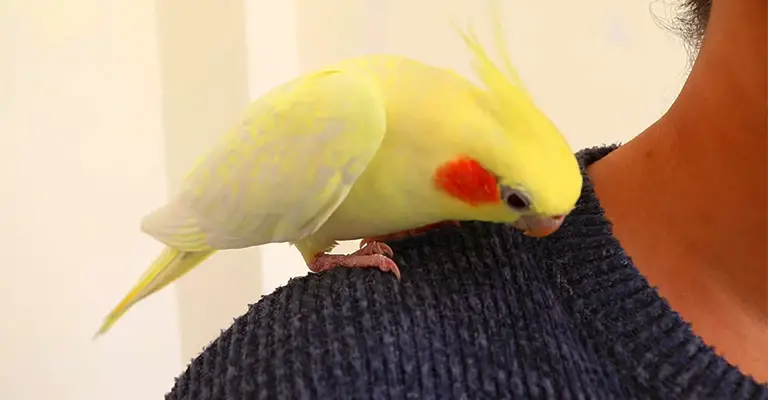
Why Does My Cockatiel Have Red Cheeks?
One of the distinctive features of these charming creatures is their rosy-red cheeks, known as “blush” or “ear patches.” These colorful markings are not just aesthetically pleasing; they serve several essential purposes in the lives of these unique avian companions.
Here’s why cockatiels have red cheeks-
Communication and Social Interaction
The red cheeks of a cockatiel play a crucial role in communication and social interaction within their flock or human family.
These patches act as visual indicators, conveying various emotional states and intentions to other birds or their human caretakers. When a cockatiel is excited or feels content, the red patches become more vibrant, signaling their positive mood.
On the other hand, if a cockatiel is frightened or agitated, the redness may fade or disappear altogether, indicating their distress. These visual cues help individuals understand the bird’s emotional well-being, enhancing the bond between human and avian companions.
Sexual Dimorphism
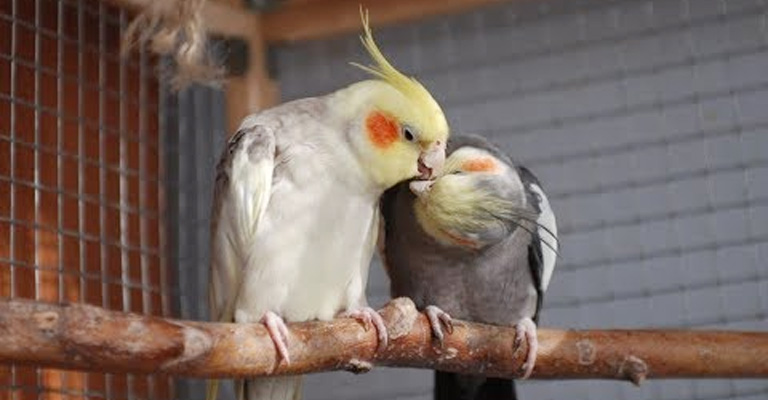
Cockatiels are sexually dimorphic, meaning there are visible differences between males and females. The red cheek patches are particularly important in distinguishing between the two genders. In general, male cockatiels have brighter and more prominent red cheeks compared to their female counterparts.
The intensity of the redness can vary depending on factors such as age, health, and individual genetics. These distinct markings allow owners or breeders to identify the sex of their cockatiels, which can be useful for breeding programs or when choosing compatible companions.
Attracting a Mate
The red cheek patches of male cockatiels also play a crucial role in attracting a mate during the breeding season. When a male cockatiel is trying to court a female, he may puff up his feathers, elongate his body, and display his bright red cheeks as part of a courtship ritual.
These displays, combined with vocalizations and other behaviors, serve as a visual and auditory spectacle to capture the attention of a potential partner. Female cockatiels are often more attracted to males with vibrant red cheek patches, associating these markings with vitality and good genetic traits.
Health Indicators
The redness of a cockatiel’s cheek patches can also serve as an indicator of its overall health and well-being. If a cockatiel’s red cheeks appear pale, discolored, or dull, it may be a sign of an underlying health issue.
Common factors that can affect the coloration of the cheeks include malnutrition, stress, illness, or hormonal imbalances. In such cases, it is crucial to seek veterinary care to address the underlying problem and restore the bird’s vibrant cheek color.
Pigmentation and Melanin
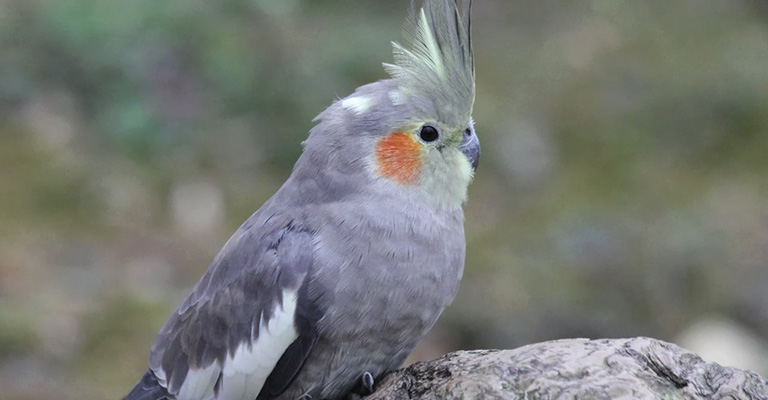
The red coloration of a cockatiel’s cheek patches is a result of pigmentation and the presence of melanin, a dark pigment responsible for various colors in animals.
The specific genes and genetic variations within cockatiel populations influence the intensity and shade of red displayed in the cheeks.
Environmental Factors
The environment in which a cockatiel lives can impact the coloration of its cheek patches. Exposure to sunlight and UV light can enhance the vibrancy of the red color.
Adequate exposure to natural light and a balanced diet rich in nutrients can promote healthy pigmentation and brighter cheek patches.
Individual Variation
Just like humans have unique physical traits, cockatiels also exhibit individual variations in the appearance of their cheek patches.
Some birds may naturally have more intense red coloration, while others may have slightly lighter or paler patches. These differences can be attributed to genetic variation and individual characteristics.
Do All Cockatiels Have Red Cheeks?
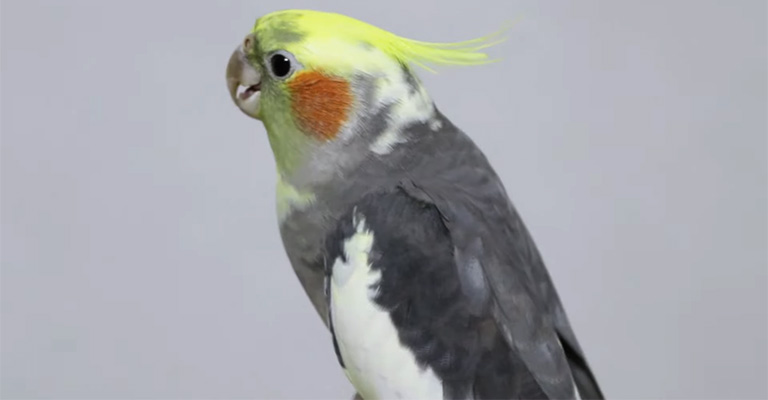
No, not all Cockatiels have red cheeks. While red cheeks are a common characteristic of many Cockatiel subspecies and color variations, not all of them display this feature. The red cheek patches, known as “ear spots” or “ear patches,” are more prominent in some Cockatiel variations than others.
Here are a few Cockatiel species and variations, along with their characteristic cheek colors:
Normal Gray Cockatiel
This is the most common and widely recognized Cockatiel variation. Normal Gray Cockatiels typically have vibrant orange-red cheek patches.
Lutino Cockatiel
Lutino Cockatiels have a pale yellow to white body with strikingly bright orange cheek patches.
Pied Cockatiel
Pied Cockatiels have a variegated plumage pattern with patches of white and gray. Their cheek patches can be orange or a combination of orange and white.
Cinnamon Cockatiel
Cinnamon Cockatiels have a cinnamon-brown body coloration. Their cheek patches are usually a lighter shade of orange or peach.
White-faced Cockatiel
White-faced Cockatiels lack the yellow or orange pigmentation in their cheek patches. Instead, their cheeks are a solid white color, giving them a distinctive appearance.
Pearl Cockatiel
Pearl Cockatiels have a pattern of pearl-like spots on their wings and body. Their cheek patches can be a mix of orange and white or have a marbled appearance.
Silver Cockatiel
Silver Cockatiels have a diluted gray body coloration. Their cheek patches are generally paler in comparison, with a lighter shade of orange or peach.
It’s important to note that individual variations can occur within each species, and some Cockatiels may exhibit slightly different shades or intensities of cheek coloration. Additionally, gender and age can also affect the appearance of the cheek patches in Cockatiels.
Is Not Having Red Cheeks Bad for Cockatiels?
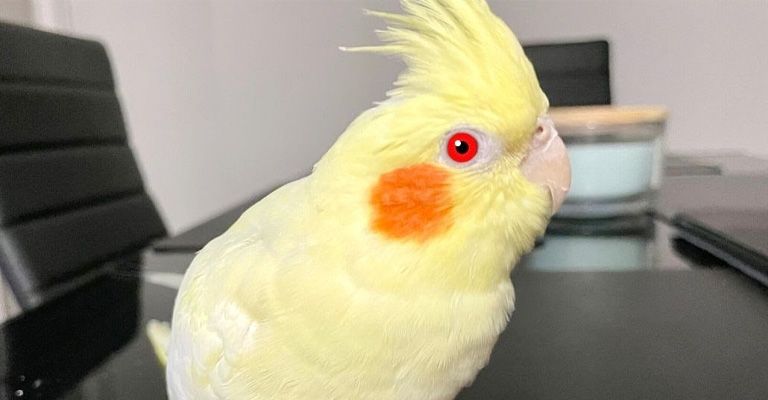
Not having red cheeks does not necessarily indicate any health issues or negative implications for cockatiels. It is simply a variation in their genetic makeup.
Each cockatiel’s individual appearance is a result of its specific genetics and the expression of certain traits. The absence of red cheeks does not affect their overall health, behavior, or ability to thrive as pets.
What Are the Common Colors Cockatiels Have on Their Cheeks?
Apart from the red and orange cheeks found in wild-type cockatiels, there are various other colors that can be observed on cockatiel cheeks. These colors are often associated with specific mutations or variations in their genetic makeup. Here are some of the common colors seen on cockatiel cheeks:
Yellow
Lutino cockatiels possess stunning yellow cheeks instead of the typical red or orange. This mutation eliminates the production of red pigment, resulting in a vibrant yellow coloration.
Cinnamon
Cinnamon cockatiels exhibit a warm and earthy coloration on their cheeks. The cinnamon mutation alters the pigment distribution, giving the feathers a cinnamon hue.
Pearl
Pearl cockatiels display unique patterns on their plumage, including their cheeks. The pearl mutation causes irregular pigmentation, resulting in a combination of white, gray, and yellow feathers on their cheeks.
Pied
Pied cockatiels showcase a striking combination of colors throughout their plumage, including their cheeks. The pied mutation results in irregular patches or blotches of color, creating a beautiful mosaic effect.
Albino
Albino cockatiels have a lack of pigmentation throughout their entire body, including their cheeks. Their feathers appear white or cream-colored due to the absence of melanin.
FAQs
No, both male and female cockatiels can have red cheeks. The presence of red cheeks is not determined by the bird’s gender but rather by its genetic makeup.
The color of a cockatiel’s cheeks typically remains consistent throughout its life. However, during molting, feathers may temporarily appear dull or discolored. Once the molting process is complete, the vibrant cheek coloration should return.
Generally, cockatiels do not lose their red cheeks as they age. However, the intensity of the red color may slightly fade over time. This fading is a natural part of the aging process and does not impact the bird’s overall health.
In some cases, the color of a cockatiel’s cheeks can be predicted based on the traits exhibited by its parents. However, due to the complex nature of genetics and the potential for mutations, it is not always possible to accurately predict the exact cheek coloration.
Generally, the presence or absence of red cheeks does not pose any health concerns for cockatiels. However, it is essential to monitor their overall health, including their diet, behavior, and feather condition, to ensure their well-being.
Final Words
So, now you know why cockatiels have red cheeks. Cockatiels’ red cheeks are a delightful and charming characteristic that adds to their beauty and appeal.
While not all cockatiels have red cheeks, the variations in cheek coloration among different species and mutations make each bird unique.
Whether their cheeks are red, yellow, or exhibit other captivating colors, these feathered companions continue to capture the hearts of bird enthusiasts worldwide.
Remember, the cheek coloration of your cockatiel is simply one aspect of their overall beauty, and it should be appreciated alongside their lovable personalities and cheerful nature.